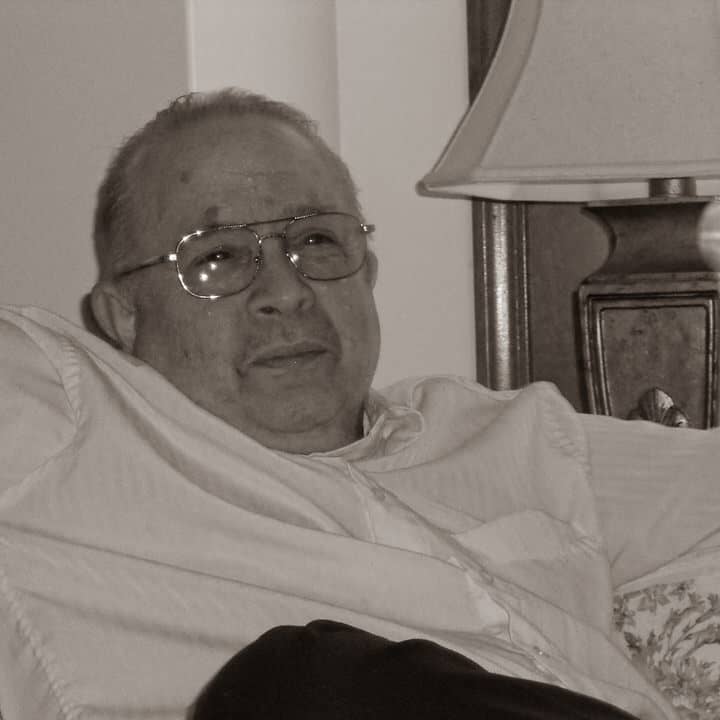About Queen Cutlery History
The roots of Queen Cutlery History date back a number of years, to the time when David Clark was appointed Historian of Queen Cutlery Company. It wasn’t long before David recruited well-known Queen colleector and knife dealer Fred Fisher to form the core of what was known as the Queen Historical Commitee. Over time the members of the team came to number four with the recruitment of knowledgable Queen knife collectors Dan Lago and Bob Welch. In 2018 Carl Bradshaw was invited to join the group as Queen Cutlery History was being established. Dan left the group in 2019.
The historical committee had access to many historical documents pertaining to the cutlery, as well as access to its management and production people. An entire section of the Queen Cutlery website was committed to company history, historical documents, articles and photographs.
Immediately following the regrettable bankruptcy of Queen Cutlery in 2018, the members of the Historical Committee met to discuss ways we might keep the history of Queen and its predecessor company, Schatt & Morgan, alive and to provide an ongoing resourse to cutlery collectors. It was agreed the previously acquired historical materials, as well as newly discovered documents, photographs and information, as well as new, relevant articles should be presented in a new, dedicated website. Thus, Queen Cutlery History was created. In a strong showing of support, the Daniels family, the last owners of Queen Cutlery, contributed all the historical documents and materials from the old company website, queencutlery.com, as well as that web domain, which we’re holding in reserve for now.
The Queen Cutlery History team wishes to thank the many knowledgable people who have and continue to support us in this effort. To retired Master Cutler Fred Samson, writer David Krauss, the late author Jim Sergeant, Mike Sullivan, Howard Drake, Bob Siple, Dan Lago and Jan Carter, we offer our sincere thank you!
Carl Bradshaw was born in Meadville, Pennsylvania. His interest in knives began at the very young age of 5, attending knife shows around the country with his grandfather, Bob Siple, who was at one time the Sales Manager for Queen Cutlery. At these large knife shows, he was introduced to many knowledgeable and interesting people from whom he was able to learn more about knives. Beginning in 1995, his grandfather began buying him the annual NKCA Youth Knives, which was the beginning of his collection. Over the years, Carl was able to acquire the entire set of NKCA Youth Knives from 1990 through 2013, including many of the prototypes as well.
Carl’s collection then began to focus on the Tuna Valley brand of knives, after his grandfather gave him one of the original 1906 pearl knives. In addition, Carl enjoys knife photography and graphics. He has done advertising work for various knife companies, dealers, magazines, and websites. He enjoys attending knife shows with his wife and daughter, and traveling the country to see new sights, and meet new people.
David Clark was born in the Ozark Mountains of north Arkansas; he graduated from the University of Arkansas, and settled in Georgia following military service. He practiced architecture in Atlanta until retiring in 2009. As a child he used his father’s pocket knife to carve the soft bark of the pine tree and thus began his affection for pocket cutlery. Saving his money and buying his first pocket knife while in elementary school, he promptly broke a blade, and returned it to Lewis Brothers Hardware Store in Fayetteville, Arkansas. The knife was replaced. It was a Ka-bar jack. Then he did what most kids did – he lost it.
So as he grew up he always had a knife to carry and one or two to fish and hunt with. He began buying some new knives to collect and hold in the early 1980s, mostly Case and some German. He started attending some of the knife shows and became acquainted with a broader range of knives, both new and antique. At one of these shows he bought a few of the new Schatt & Morgan pocket knives made in the early 1990s, bone and stag handled beauties. He also invested in some of the Case Classics and the Winchester reproduction knives produced around that same time. All were beautifully made. David was always interested in history and learned that these knives were made in the Queen Cutlery factory in Titusville, Pa., in a building dating to 1902. He attended one of the first Queen Cutlery factory tours and knife shows. There he met Fred Fisher, probably the most knowledgeable collector of Queen cutlery, and that is where his real education began with some of the antique Queen knives. Clark met David Krauss, who at that time was writing his book about Queen and Schatt & Morgan, “American Pocketknives” and he contributed some research and information for the Dollar Knife Chapter. His education of antique cutlery and cutlery manufacturing continued with many discussions with Joe and Betty Dial of Alabama, who were collectors of Queen Cutlery for many years; and with Pete Cohan, Jim Sargent, Mark Zalesky and Bruce Voyles.
David discovered that he not only loved cutlery history, particularly Shatt & Morgan and Queen, but also the research of the early men who started these factories and the cutlers that made the knives. Occasionally, he has contributed articles to Knife World Magazine focusing on these subjects. In addition he has reproduced two antique Schatt & Morgan catalogs.
Fred Fisher. I retired from the trucking industry in 2003 with 37 years of service as a Teamster.
My interest in knives began around 1980 when I started collecting the fish knife pattern. I really liked the looks of the Queen fish knives and decided to find out where the Queen Factory was. Much to my surprise, the factory was in Titusville Pennsylvania and I live in the state of Ohio.
I used to attend the monthly Flea Market in Washington Court House in Ohio and met Ray Goldstein, Bill Bryant, and Clarence Risner who sold knives and were gracious enough to educate a beginner on Queen knives. Ray suggested I should attend the NKCA Shows, one of which was in Erlanger, Ky. There I met Bob Siple, Jim Sargent and the others from Washington Court House Flea Market. I was like a kid in a candy store! I wanted one of everything I saw!
I asked Bob Siple a lot of questions about Queen Knives as he was the former Sales Manger from the Company. He was very informative and taught me a lot about this brand of knives. I would pick up any literature I could find concerning Queen Knives. A few years later, I was very lucky to met Joe and Betty Dial from Alabama who were collectors of Queen. They were very knowledgeable about the history of Queen and provided much information to help me learn.
I decided to collect Queen Knives from the era after WWII. This was when they started with the Stainless Knives and I was determined to collect every pattern, handle material, tang stamp, and etch Queen made.
Jim Sargent approached me in 1991 and asked me to help with the book titled ‘Sargent’s Premium Guide to Cutlery’, working on the Queen section. I took my knives to the show in Chicago and Jim had a photographer take pictures of all my knives. I did a total of 3 books for Mr. Sargent with the last book, completed in 2008 with my complete collection of Queen Knives photographed and also did the description and value of each knife in my home.
I’m still an avid collector. I search eBay, Flea Markets, and Knife Shows to find new treasures.
Bob Welch hails from the Finger Lakes region of New York. A graduate of LeMoyne College, he spent well over 30 years as an international sales executive in the field of electronic interference control.
As a pre-teen he bought his first knife from the Case display at the neighborhood hardware store. Over the years he acquired other knives from time to time but didn’t start collecting seriously until the 1990’s. During that era he met the late H.T. Carter, outdoorsman, (then) septuagenarian, knife collector and all-around memorable character. H.T was the proprietor of Village Cutlery in Scottsville, NY and he became sort of a mentor to Bob in his early knife collecting days.
Although he sold many brands of knives, H.T. was particularly fond of Queen due to the company’s history and most importantly the quality of its products. Bob started to focus his collecting attention on Queen knives, buying some new product as well as early knives, which he found at knife shows and occasionally on websites such as ebay. As a result, today he has a nice collection of Queen knives with an emphasis on the older Queen City and Queen knives produced through the 1960’s.
As his interest in Queen cutlery developed he was fortunate to learn more about the company and its history from knowledgeable sources such as Fred Fisher, David Clark, Fred Samson, Howard Drake and others. Bob was honored when in 2015 he was asked to join the Queen Historical Team and he looks forward to learning more and to sharing his cutlery knowledge with other collectors.




